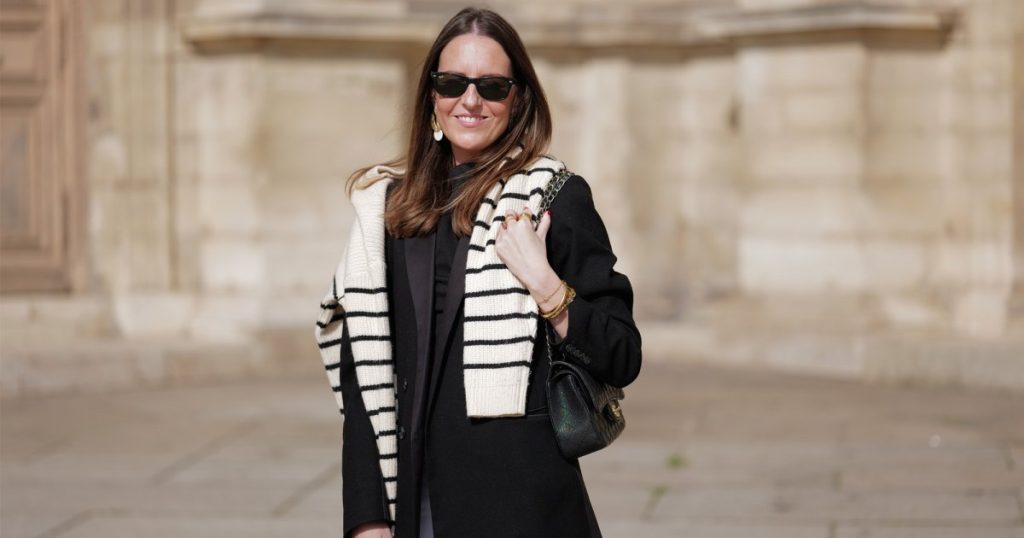This article from Us Weekly delves into the world of affordable fashion, specifically targeting the coveted “rich mom” aesthetic popularized by retailers like Zara. It acknowledges the difficulty of unearthing hidden gems amidst the overwhelming sea of sponsored products and bestsellers on Amazon. However, the author, a shopping writer, leverages their expertise to curate a collection of Zara-inspired pieces available on Amazon, making attaining this upscale look accessible to a wider audience. The article emphasizes the convenience and affordability of achieving this style without compromising on the desired aesthetic.
The core premise revolves around replicating Zara’s signature style, which the author identifies as being heavily influenced by the “rich mom” aesthetic. This aesthetic, characterized by a blend of classic, timeless pieces with trendy, contemporary elements, is highly sought after. Zara serves as a popular destination for those seeking to emulate this look, offering a mix of trendy and basic items at relatively accessible price points. The article aims to bridge the gap for those who may not have easy access to Zara or prefer the convenience of Amazon, providing a carefully selected list of items that capture the same essence. This allows readers to achieve the desired look without the need to sift through countless products on Amazon.
The article then presents a curated list of 17 Zara-style items available on Amazon, spanning various categories from clothing to accessories. Each item is accompanied by a brief description highlighting its key features and how it contributes to the overall “rich mom” aesthetic. Examples include a silky slip skirt with a tie-front detail, an off-the-shoulder sweater suitable for both professional and casual settings, a luxe leather jacket, a vintage-inspired shoulder bag, and a Hampton’s-esque knit two-piece set. These selections demonstrate the versatility of the “rich mom” style, encompassing both comfortable everyday wear and more polished pieces for special occasions. The descriptions also emphasize the value proposition of these items, often noting their high-quality appearance despite their affordable price tags.
The curated list continues with items such as cozy clogs with double belt buckles, a shearling jacket with faux fur and gold buttons, wide-leg jeans, a striped cardigan sweater, a lightweight coatigan, sleek tailored slacks, a tweed-style blazer, a puff-sleeve sweater, a cable knit sweater vest, leather knee-high boots, and mixed metal statement earrings. This diverse range of items allows readers to build a complete wardrobe inspired by the “rich mom” aesthetic. The emphasis on versatility is maintained throughout, highlighting how each piece can be incorporated into different outfits and styled for various occasions. This comprehensive approach ensures that readers can create a cohesive and stylish wardrobe without needing to shop elsewhere.
The article implicitly underscores the value of mindful shopping, demonstrating that achieving a desired aesthetic doesn’t necessarily require exorbitant spending. By carefully selecting pieces that align with the “rich mom” look, readers can elevate their style without breaking the bank. The emphasis on Amazon’s convenience further enhances the appeal, offering a streamlined shopping experience for those seeking to emulate this trend. This aligns with the broader trend of seeking affordable alternatives to high-end fashion, empowering consumers to curate stylish wardrobes without compromising their budgets.
Ultimately, the article serves as a practical guide for those seeking to achieve the coveted “rich mom” aesthetic without the hassle of navigating crowded stores or spending a fortune. By leveraging the author’s expertise and the convenience of Amazon, readers can effortlessly curate a stylish and sophisticated wardrobe that embodies the essence of Zara’s signature style. This approach democratizes access to high-fashion trends, making them attainable for a broader audience. The focus on affordability and accessibility underscores the article’s core message: style doesn’t have to come at a premium.

